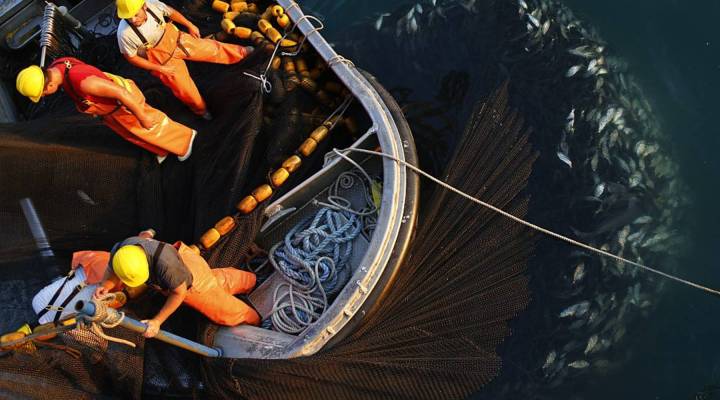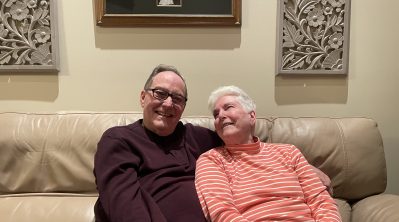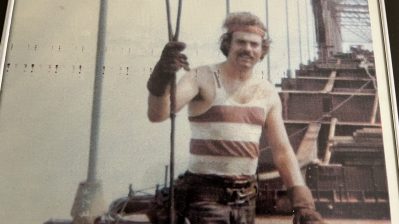
How sustainable seafood can harm coastal communities

Seafood is big business, but there is a limited supply of fish in the ocean. Now, a policy push in the United States aimed at making seafood more sustainable has made it more difficult for coastal communities that depend on fishing to compete with investors and large corporations. Marketplace host Kai Ryssdal spoke with Lee van der Voo about her book on this topic, “The Fish Market: Inside the Big-Money Battle for the Ocean and Your Dinner Plate.” Below is an edited transcript of their conversation.
Kai Ryssdal: Tell me the story of how this book came to be.
Lee van der Voo: Sure. Actually, I had just written a story about seafood and was in a bar with a bunch of writers loudly complaining about how I was never going to do it again. Somebody heard me and bet me, on the spot, one beer that they could get me to do it. And they started telling me about a new policy push to make seafood more sustainable in America and how it was starting to have some really significant downstream consequences for coastal communities and people who fish.
Ryssdal: Long story short, you lost the beer.
Van der Voo: Yeah, I lost that bet. It was worth it.
Ryssdal: Do me favor and define a term for me, because it’s kind of at the root of this whole book, this idea of “catch share.”
Van der Voo: Sure. The U.S. enforces limits on how many fish can come out of the water. They do it to make sure that the fish that come out in any given year can be there again next year and in 20 years. A catch share is a means of enforcing that cap. And what it is, is to take the pie of all the fish that can be caught in a given year, and slicing it up and giving the pieces away in ownership to individuals and corporations that qualify.

Lee van der Voo
Ryssdal: So, in theory, if I could buy into this market, I could buy the rights to 250,000 pounds of pollock or whatever it is.
Van der Voo: If you’ve got a deep enough pocket you can.
Ryssdal: Right. The problem though, at least as I gather from your book, is that these rights then become privatized. What was supposed to be a communal health-of-the-ocean thing has become an economic device.
Van der Voo: Yeah, indeed it has. The idea was give fishermen a stake in the ocean, and they’ll become conservationists. But it was a bit of a gamble. It was like giving 100 people houses and betting everybody’s going to cut their grass; you just don’t really know. And the effect has been kind of mixed. Some people became the good stewards that conservationists envisioned when they pushed this policy in America, and a lot of people just became landlords.
Ryssdal: How much of this is related to the idea that we, or a lot of us as consumers, want, which is sustainable fishing and not going out and just rapaciously taking all the fish from the sea?
Van der Voo: It certainly rode that wave. There are a lot of ways to enforce caps on the ocean, and I would say that private property rights have not been the best way to do it. But certainly a lot of this has been wrapped in this ethos of conservation and eating without harm. Seafood is interesting for consumers. Consumers like to go to the store, and they want to eat beef and chicken, and dependably it’s always there. Seafood is tougher. It’s not that way, it’s never been that way. And catchers, I think a lot of what made them unique, was the promise that they could become that way — that seafood could become available for diners like hot dogs and candy corn. You show up at the grocery store and there it is. It definitely did slow down the market for catching fish. It started to balance out a lot of the supply-demand problems that came from other types of regulation. But again, that private property right has really complicated things for workers in the industry and also for the communities in which they live.
Ryssdal: This transition to catch shares, has it been transparent to consumer? I mean, 30 years ago, if I went to the freezer aisle and got some fish sticks, is it a different experience for me today? It’s basically same deal right?

Van der Voo: I don’t know that the transition has been terribly transparent. I think that there’s been a lot of discussion about fishermen leading better lives and being more deeply rewarded for the work that they do. And I think that that’s true for people who became inheritors of the resource. The ones that are still out there fishing, they definitely do get paid better, they’re safer because the industry has slowed down through this method of pre-assigning who gets to catch what, and it definitely is ecologically cleaner to pre-assign the catch. But the private property piece, that’s the piece that nobody talks about. I mean, in any other natural resource industry in America, say timber or mining, we do this through leasing. We don’t do it by giving people ownership over the resource. And it’s that ownership that is creating these downstream consequences for so many people. It used to be, that if you were a fisherman and you wanted to grow in your industry, you would just get better at it. And you would, over time, be able to afford your own boat, afford your own equipment, afford the licenses to go fishing. Now you have to be able to afford the access to the ocean, which is tremendously expensive. And so, the next logical inheritor of the resource is no longer the fishermen, it’s investors, it’s corporations, it’s entities that are moving the economic benefits of fishing further and further away from coastal towns.
Ryssdal: Great line in the acknowledgements, which, to be fair, you credit to Rick Lyman at the New York Times: “People don’t care about fish or fishing, they care about seafood.” That’s kind of what underlies this whole thing right?
Van der Voo: Yes, indeed. People care about what they eat. Maybe not so much about the person that brings it to them, but maybe they should. You know, this is a pretty significant trend here in this nation. We’ve seen a lot in the last election, people talk an awful lot about what has happened to workers in the heartland, but we’re not really talking about what’s happening to workers in coastal communities. Right now, that halibut that’s costing $28 to $30 a pound in the Whole Foods case, the guy that goes and catches that is paying up to 75 percent of the revenue of that trip to a landlord. That’s a problem.
Ryssdal: It’s a book called “The Fish Market” by Lee van der Voo. Lee, thanks very much.
Van der Voo: Thank you for your time.
There’s a lot happening in the world. Through it all, Marketplace is here for you.
You rely on Marketplace to break down the world’s events and tell you how it affects you in a fact-based, approachable way. We rely on your financial support to keep making that possible.
Your donation today powers the independent journalism that you rely on. For just $5/month, you can help sustain Marketplace so we can keep reporting on the things that matter to you.

















